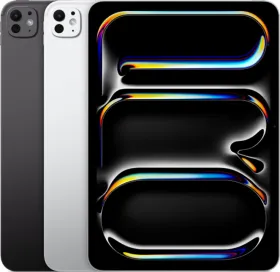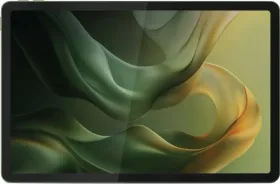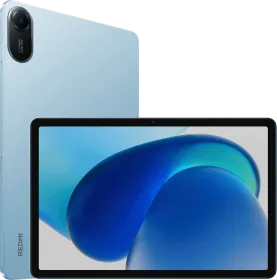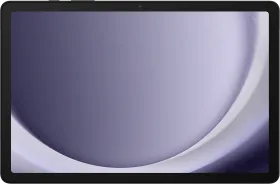Apple’s WWDC 2025 keynote was big visually, symbolically, and strategically. But whether it was revolutionary depends on where you stand in the growing debate over the company’s new design identity. Meet Liquid Glass, Apple’s glossy, depth-rich visual language that now carries forward to every other Apple OS update, from iOS 26 and iPadOS 26 to macOS Sequoia and visionOS 2.

It’s Apple’s most sweeping visual overhaul in over a decade, and just as it did with iOS 7 in 2013, the company is once again redrawing the lines of interface design. Only this time, not everyone’s convinced it’s a step forward.

Apple’s Liquid Glass: The iOS 26 Redesign Everyone’s Talking About

Liquid Glass is built around translucent surfaces, layered depth, glossy materials, and animations that refract light like curved crystals. It replaces the stark flatness and functional restraint of the post-iOS 7 era with something more theatrical, an interface designed to shimmer and float.

On the iPhone, app panels now hover above blurred backgrounds; on iPads and Macs, system windows gain a soft, layered transparency that subtly reveals the environment behind them. Even visionOS 2 leans further into spatial depth, turning the entire Apple ecosystem into a unified, glassy stage.
Craig Federighi called it a “more dimensional, emotionally rich UI.” Trollers online had other terms. The most viral one? “Windows Vista in disguise.”
That comparison, repeated across Reddit threads, Mastodon posts, and YouTube reaction videos, isn’t entirely unfair. Microsoft’s Aero Glass in Vista (2006) also leaned heavily into translucent layers and motion-filled transitions. But where Vista’s UI pushed underpowered hardware to its limits, Apple’s take rides atop the A17 Pro, M3, and S9 chipsets — all with ample headroom for buttery animation without lag.
ALSO READ: iOS 26 is Official; Check Out 30 New Features
Liquid Glass, iOS 26, and the New Apple Interface: Stunning Design or a Mistake?

The deeper debate around Liquid Glass isn’t about technical capability; it’s about taste, muscle memory, and Apple’s evolving design philosophy. After years of prioritizing simplicity, the company now seems to be making aesthetics a central feature again. That’s exciting for some and frustrating for others.
“Yes — it looks stunning. The transparency, the motion, the depth… It’s a visual treat. But accessibility seems to have been left behind.” Wrote on X.
Another user wrote on X “So this Apple Liquid Glass UI reminds me of Aero on Windows Vista.”
“Everyone mocks the liquid glass look, but I am super excited about it.” said Co-founder & CEO
photoroom_app on X.
The division is real and palpable. Designers have raised concerns over legibility in layered UI contexts. Longtime Apple fans worry this is a change for the sake of change, the same sin the company committed with the controversial iOS 18 Photos app redesign, which Apple now appears to be walking back in iOS 26.
But to its credit, Apple isn’t just applying a visual theme. Translucency now serves a functional purpose: helping users understand spatial hierarchy, multitasking layers, and content relationships at a glance. In places like Stage Manager or iPad’s new floating window system, this added visual context actually makes navigation smoother, even if it takes some getting used to.

Catching Up but in Style
Beyond the aesthetic overhaul, WWDC 2025 reflected something deeper about Apple’s strategy: the company is finally catching up to industry norms, just with better polish.
- iPadOS 26 finally introduces true floating window multitasking with a macOS-style menu bar, a feature Android tablets like the Galaxy Tab have had for years.
- iPhone’s new AI call screening and Hold Assist are smart and privacy-conscious, but essentially repackaged versions of features Google Pixel users have enjoyed since 2018.
- Messages app enhancements like smart replies, scheduled sends, and group polls feel more like acknowledgments than innovations.
These updates might not be groundbreaking, but Apple’s implementation is cleaner, faster, and more reliable, thanks to its vertical control of both software and hardware.
ALSO READ: Full List of iPhone Models Compatible with iOS 26 update
The Silicon That Makes It Possible
If there’s one reason Liquid Glass won’t become the next Aero Glass-style cautionary tale, it’s this: Apple Silicon.

Thanks to chips like the M3 Max, A17 Pro, and M4, Apple can pull off effects that would choke a lesser SoC. Animations, live translations, multitasking, and real-time AI image tools all run locally and instantly — no lag, no heat, no stutter.
Apple’s unique position, designing the chip, the OS, and the hardware, allows for fluid experiences across iPhone, iPad, Mac, and Vision Pro. It’s the kind of systems integration even Google and Samsung haven’t fully cracked.
But Where’s the AI Breakthrough?
Still, WWDC 2025 left some fans and developers underwhelmed when it came to AI-powered interaction.

Apple announced not much about the Apple Intelligence other than its on-device privacy-first generative AI model, but there was no. No supercharged Siri. No real-time multimodal assistant.

The company says more powerful conversational Siri upgrades are coming in 2026. That might be too late. In the meantime, users are already engaging with ChatGPT, Google Gemini, and Microsoft Copilot across platforms. Apple’s perfectionist pace, while admirable, could be causing it to fall behind in the AI arms race.
ALSO READ: Apple Bets on Quality in the AI Race; Resons behind Siri Overhaul Delay Revealed
A Divided but Defining Moment

So, is Liquid Glass the future of UI design, or a polished misstep? Right now, it’s both. Apple’s new interface is beautiful, deliberate, and deeply engineered. But it’s also flashy, opinionated, and risky in a way Apple hasn’t been in years.
For every fan who welcomes the return of visual flair, there’s another who misses the restraint and calm minimalism that made iOS feel intuitive for so long.
The redesign isn’t just about looks. It’s a signal. Apple is starting to reassert its visual identity, even at the risk of friction. And if history is any guide, the industry may follow, just like it did after the flat UI pivot of iOS 7.
Whether Liquid Glass becomes the next standard or the next stumble will depend not on the keynote demos, but on how it feels after six months of daily use. That’s where Apple usually wins.
You can follow Smartprix on Twitter, Facebook, Instagram, and Google News. Visit smartprix.com for the latest tech and auto news, reviews, and guides.


































